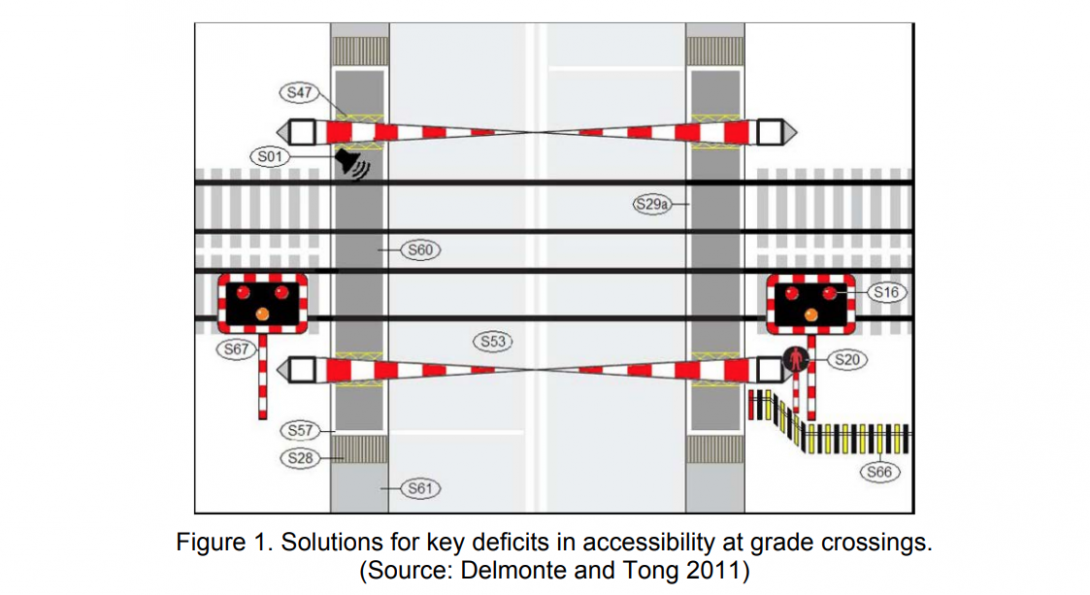Analysis of Pedestrians and Cyclists Actions at CTA Rapid Transit Grade Crossings Signals Need for Safety Improvements

Better Warning Signals, More Awareness Cited in Report From Urban Transportation Center at UIC
Women are more safety-conscious than men when proceeding across street-level rail crossings, while guys under 21 years old who are in a hurry sometimes ignore activated warning signals and proceed across railroad tracks.
People over 51 years old take more notice of active warning devices than passive ones like signage, and everyone becomes less aware of an oncoming train if they’re talking on a cell phone or listening to music through ear buds when approaching a railroad crossing.
These findings, and others, were among the conclusions made by researchers who conducted surveys and studied pedestrian and cyclist activity at seven Chicago Transit Authority (CTA) rapid transit grade crossings in metropolitan Chicago.
A team at the Urban Transportation Center at the University of Illinois at Chicago undertook the research to learn ways to improve pedestrian and cyclist safety at rail grade crossings and augment a 2013 study that analyzed safety at various freight and passenger rail crossings.
Findings and recommendations were published in a report, “Pedestrian/Bicyclist Warning Devices and Signs at CTA Rail-Highway Grade Crossings.” According to the report, recent national research revealed the number of pedestrian and bicycle fatalities at highway-rail grade crossings increased over the past 10 years, contrary to a decrease in train–vehicle collisions during that same time period.
Researchers gathered 211 surveys from people ranging in age from 18 to more than 70 at seven grade-level crossings at CTA rapid transit stations on the Yellow Line in Skokie, the Pink Line in Cicero and the Brown Line in Chicago. The vast majority of those surveyed – 98 percent – were walking, with the balance riding a bicycle; surveys were conducted between 6 a.m. and 1 p.m. using pencil and paper.
One survey finding revealed a significant number of people sometimes walk across tracks when warned to stay put. As stated in the report: “A great majority of the respondents said they would not cross the tracks when the lights are flashing, the bells are ringing, or the gates are down. However, up to 25% of the respondents, on occasion, would still cross the tracks against activated signals/warning devices.”
The report cited several recommendations on how to improve safety at rail grade crossings, including:
- Future improvements should always consider the special needs of people with disabilities.
- Governments and transit agencies may need to sustain educational and enforcement campaigns to alert pedestrians that it’s illegal to walk through a grade crossing when signals are activated, and what’s more, crossing at other locations is trespassing.
- More research is needed to determine the effectiveness of warning devices and signs for pedestrians.
The report was prepared by Paul Metaxatos, Research Associate Professor, and P.S. Sriraj, UTC Interim Executive Director and Research Associate Professor. Funding was provided by the Metropolitan Transportation Support Initiative (METSI) from the Illinois Department of Transportation. Funding for this report was provided by: The NURail Center, University of Illinois at Urbana-Champaign; the National Center for Transit Research (NCTR) Center for Urban Transportation Research (CUTR), University of South Florida.